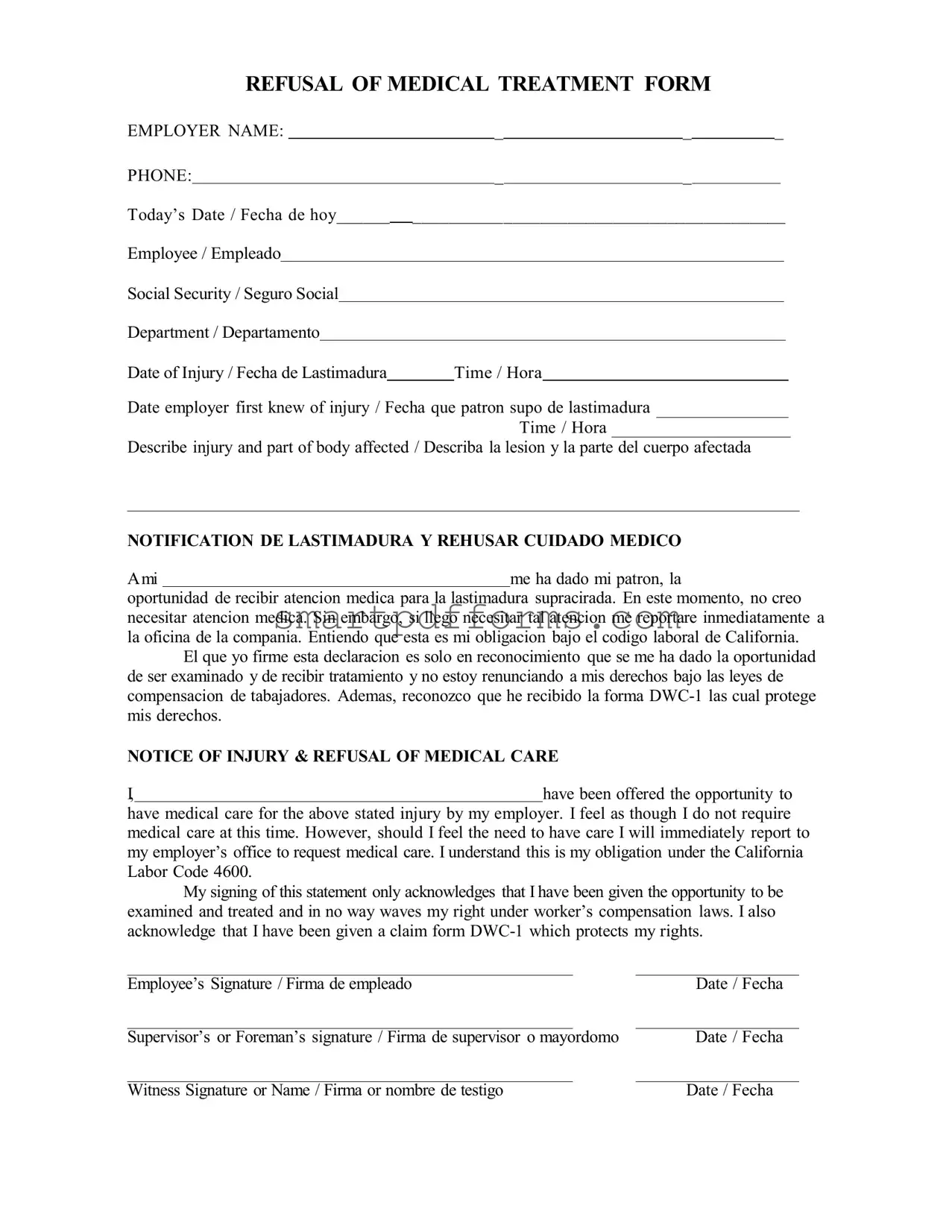Blank Refusal Of Medical Treatment PDF Template
The Refusal of Medical Treatment form serves as a critical document where employees can officially decline medical care for injuries sustained while at work, despite being offered such care by their employer. This form plays a vital role in ensuring that the refusal is well-documented, clarifying that the employee is choosing not to pursue immediate medical attention willingly, but still retains the right to worker’s compensation benefits as stipulated under relevant labor laws. For employees, understanding the implications of signing this form and ensuring accuracy in its completion is paramount.
To ensure your rights are protected, even when opting out of immediate medical care, consider filling out the Refusal of Medical Treatment form diligently. Click the button below to get started.

